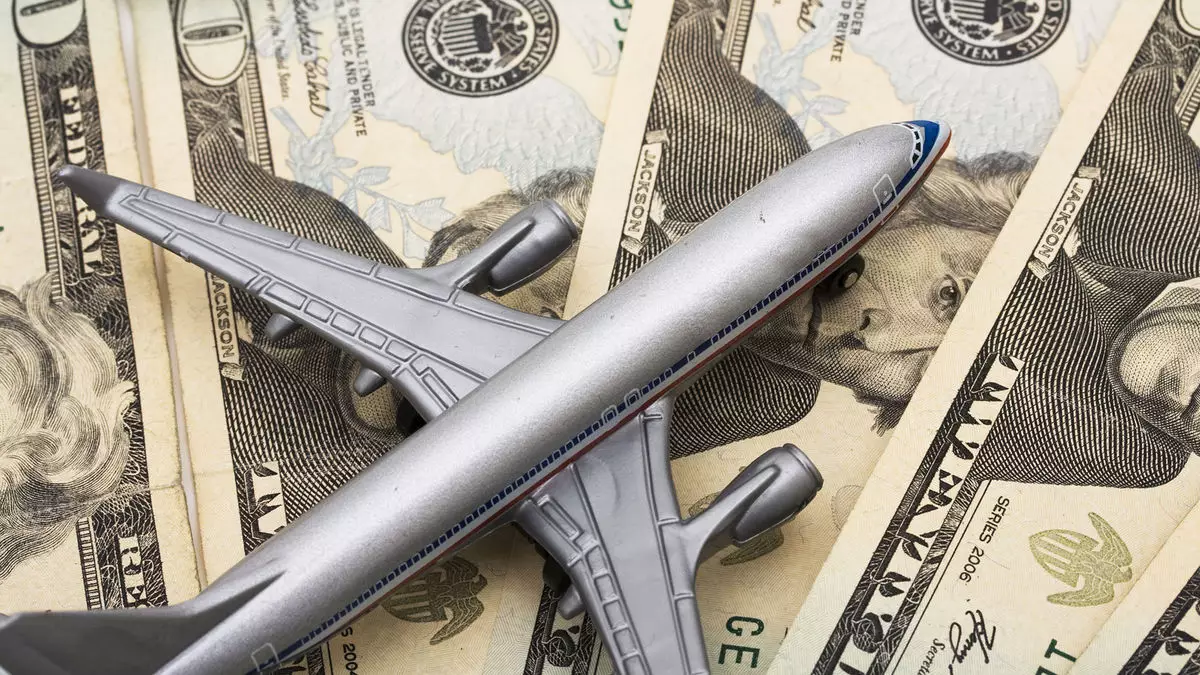The U.S. airline industry, once a symbol of economic strength and connectivity, is now navigating through turbulent skies, exacerbated by President Trump’s sweeping global tariffs and an unstable economy. According to Tom Fitzgerald, an astute investment analyst at TD Cowen, the implications of these tariffs may spell disaster for an industry already grappling with the ramifications of a faltering economy. What makes this situation alarming is the precarious balance of consumer confidence, which is critical for the airline sector. Recent drops in stock prices and deteriorating business travel reflect serious concerns about demand, pivotal for airlines to thrive.
The airline industry has a unique sensitivity to economic fluctuations. As corporate travel dwindles due to hesitance spurred by economic variables, airlines are beginning to feel the strain. Fitzgerald mentions that the decline in the stock market poses a direct threat to consumption patterns, particularly among baby boomers, who typically represent a significant portion of airline revenue. This demographic shift in travel behavior raises a red flag about the long-term viability of airlines in an increasingly uncertain trade climate.
The Impact of Tariffs on Consumer Confidence
The cloud of uncertainty surrounding global trade policies not only affects airlines but also encompasses a broader range of consumer sentiment. Fitzgerald argues that the tariffs introduced under the current administration will further inhibit consumer spending. As airlines brace for an economic downturn, the fears of recession loom larger than ever. The Jets ETF fund, representing a composite of U.S. airline stocks, has experienced a staggering 33% decline since its peak on inauguration day, underscoring the gravity of the situation.
Several airlines were swift to adjust their earnings guidance, pointing to indicators such as reduced consumer confidence and governmental job cuts, which compound the already precarious economic landscape. Such measures underscore the industry’s vulnerability and the urgent need for airlines to recalibrate their strategies to survive the downturn.
Price Wars and Market Adjustments
Interestingly, the silver lining in this tumultuous climate may come in the form of cheaper airfares, which Fitzgerald notes could benefit the remaining travelers. The rapid softening of demand has left airlines with an oversupply of seats, creating an environment ripe for competition. While strategies to streamline operations are underway, predictions suggest that airlines will take considerable time to align their capacity with the new reality.
Fitzgerald anticipates that full-service airlines are better positioned to weather this storm than low-cost carriers. This perspective stems from the expectation that consumers will gravitate toward value; rather than abandoning reputable carriers, it is more likely they will opt for the more economical options offered by these full-service airlines. In this dynamic, airlines must leverage their strengths while continuing to innovate their offerings to retain market share.
The landscape for U.S. airlines is precariously perched on the cliff of economic uncertainty. The internal and external challenges they face necessitate not only a keen analysis of their current circumstances but also an adaptable strategy to navigate through the impending financial storm. Without a keen focus on these pivotal issues, the future of air travel in the U.S. could remain as turbulent as the current economic climate suggests.


Leave a Reply